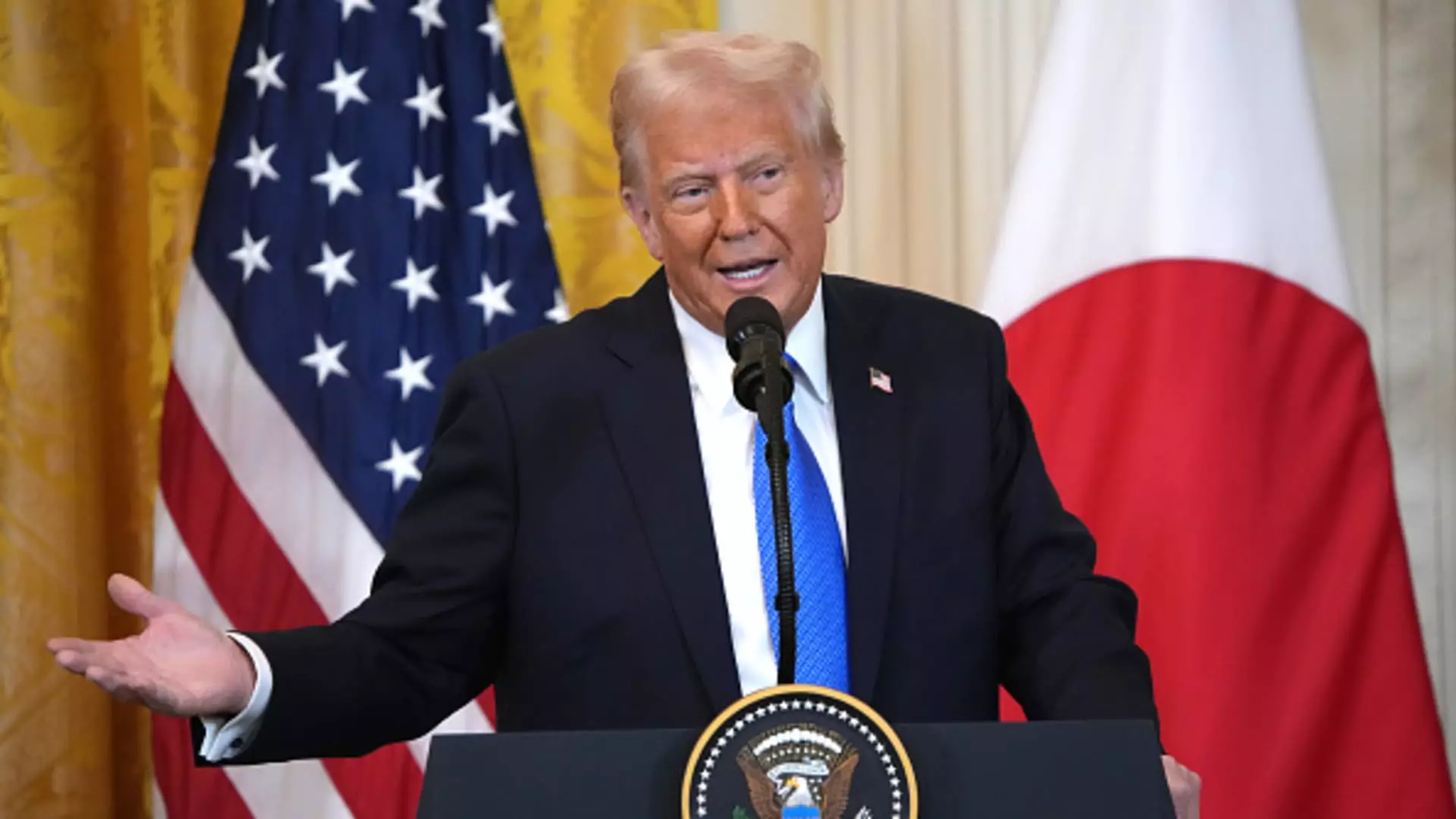The recent announcement of a sweeping trade agreement between the United States and Japan signals, on the surface, a new chapter of economic cooperation. However, beneath the veneer of mutual victory lies a complex web of strategic calculations that merit skepticism. This deal, characterized by what President Trump touted as “perhaps the largest Deal ever made,” seems more like a political maneuver rooted in short-term gain rather than a genuine, forward-looking economic strategy. While the claim of “creating hundreds of thousands of jobs” sounds promising, it risks obscuring the nuances that reveal potential pitfalls for both nations.
The core of the agreement centers around reciprocal tariffs set at 15%, a reduction from previous levels, chiefly aimed at Japan’s automotive exports. Considering that Japan’s auto industry accounts for about 28.3% of its shipments to the U.S., any tariff adjustment significantly impacts both economies. Yet, this shift raises questions about the long-term stability of such agreements. Will the U.S. truly safeguard its economic interests, or is this a temporary reprieve that could accelerate a cycle of trade concessions and retaliations? Moreover, the calculation that Japan will invest $550 billion into the U.S. seems ambitious, but the actual translation of such promises into tangible projects remains unverified and potentially exaggerated.
Economic Realities and Political Calculations
The timing of this deal appears as much a political gambit as a strategic economic move. Coming roughly after Japan’s governing coalition lost its majority in the upper house, the agreement may serve as a means to bolster Prime Minister Ishiba’s crumbling leadership. Critics might argue that such deals are less about mutual benefit and more about shoring up political support amid domestic instability. The Japanese markets reacted positively, with auto manufacturers experiencing significant stock surges; however, these gains could evaporate if the political landscape shifts or if global trade tensions re-escalate.
It’s also worth noting the broader context: Japan’s auto exports to America have already been declining—down approximately 26.7% in June—reflecting weakening demand amidst economic uncertainties and shifting consumer preferences. Does lowering tariffs genuinely address these structural issues, or does it merely delay inevitable economic adjustments? The deal’s focus on trade concessions appears to overlook the underlying vulnerabilities in Japan’s export-driven economy, which faces headwinds from technological shifts and competitive pressures.
Power Plays and the Illusion of Victory
At a glance, the agreement might seem like a decisive victory for the U.S., especially given Trump’s claim that “the U.S. would receive 90% of the profits.” Yet, this figure hardly clarifies who truly benefits in the long term. Is this a strategic rebalancing of economic power, or simply another chapter in America’s ongoing gamble for global economic influence? The deal’s emphasis on military and political alliances often obscures the reality that globalization is a double-edged sword—while it can generate growth, it also leaves nations vulnerable to global shocks and internal dissent.
Further, Trump’s bold assertion about “the largest Deal ever made” and the imminent agreements involving LNG and Europe seem exaggerated and somewhat disconnected from tangible outcomes. These claims risk fueling public skepticism about the sincerity of political narratives that often prioritize image over substance. As international trade becomes increasingly complex, such blanket declarations serve more to rally political support than to provide a stable, mutually beneficial framework.
The Narrow Scope, Broader Implications
The real concern lies in what this agreement signals for future U.S.-Japan relations and the global trade environment. While headline numbers might suggest a victory, the deal’s narrow focus—in auto tariffs and selective agricultural products—raises questions about its comprehensive value. The potential for retaliatory measures, shifting alliances, and internal political upheavals must be acknowledged as constant threats to the stability of such agreements.
Moreover, placing too much faith in trade deals as instruments of economic renewal overlooks the need for broader reforms. Investing in domestic industries, fostering innovation, and addressing income inequality are crucial strategies that no trade agreement can substitute. Relying heavily on diplomatic deals to deliver economic prosperity neglects the deeper structural issues that underpin sustainable growth. As history has shown, trade agreements can be cyclical and precarious—quick fixes that often mask long-term vulnerabilities rather than resolve them.
In essence, the U.S.-Japan trade deal, while presented as a landmark achievement, is more a reflection of political expediency than a transformative economic strategy. Its emphasis on tariffs and superficial promises masks underlying fragilities in both nations’ economies, a reality that should not be ignored amid the celebratory narratives.



Leave a Reply